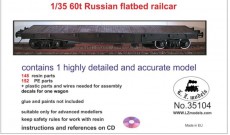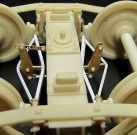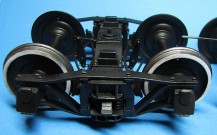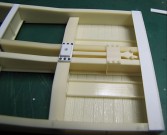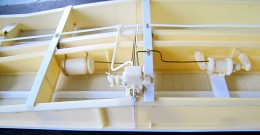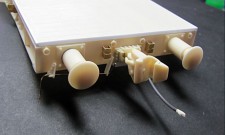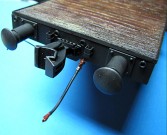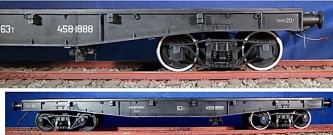1/35 Russian 60t platform wagon
1/35 60t Russian flatbed railcar
highly detailed and accurate model
148 resin parts
152 PE parts
+ plastic parts and wires needed for assembly
decals for one wagon
assembly instructions on CD and download here: click
One of first type of Russian heavy flat wagon, built about 1930. It had welded side beams construction, these beams were made from rolled sections later on. There were many manufacturers in Russia, to name a couple, Ural Car Plant, Krukov carriage factory or Ust-Katav Wagon building Works named after L.M. Kaganovich, who produced in 1934 the wagon pictured. Until 1935 only the well known common screw couplings and buffers were in use in Russia, but they were not well suited to the cold climate and other requirements. In 1928, an UIC appointed Working Group ( founded in 1922) began working on the development of automatic coupler. Since the work never got off the drawing board to define the basic requirements, The Soviet Union decided to use the concept of the robust U.S.Willison Coupling. A coupler was constructed in 1932 by team of Moscow engineers responsible for the repair of wagons. After the 1933 introduction of the concept, automatic couplers was adopted, and implementation began in 1935. World War II however interrupted work, so the transition to the automatic coupler was not completed until 1953.
During WWII these cars were used widely in military service by Russian Army and captured ones later by Germans. The Wermacht, on their progress East, changed the Russian gauge 1520mm for their own ( and usual in most Europe countries) 1435mm. Captured cars got narrower bogies to be used on new rails, and later on, when Germans were withdrawing, the Russians used these changed cars
as well.
Model fits to any 1/35 rail sections available at the market
